When Irene Yee, a climber and photographer based in Las Vegas, received an invitation to participate in a pilot course for the American Mountain Guides Association (AMGA) women’s single-pitch instructor course in 2018, she turned it down. But not because she wasn’t excited about it. Maybe it was better to let someone else—who actually aspired to become a guide—take that spot, she says. “But I [was] happy to photograph—because it’s something that needs to be seen and shown.”
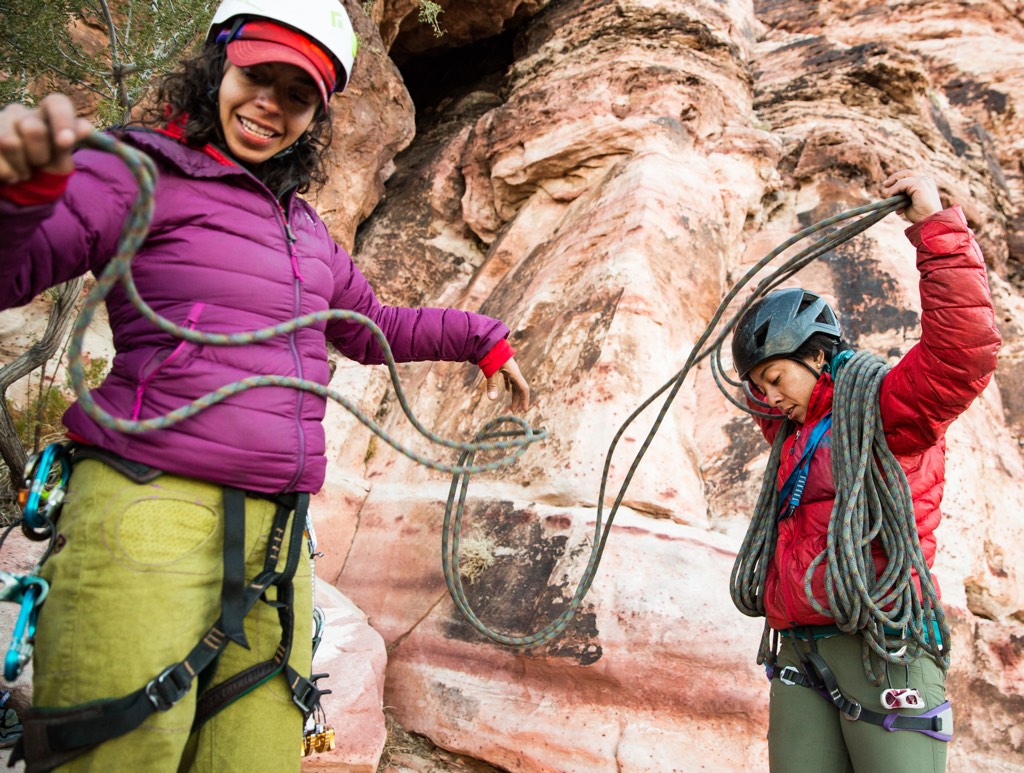
All photos by Irene Yee
So she went to document the course, at at Red Rocks Canyon National Recreation Area, which was a precursor to the AMGA’s new women’s rock guide course—the first of its kind—and part of a larger discussion about the number of women climbing guides in general. Yee captured the students practicing with anchors and knots and listening to their instructors, and then shared the photos with her more than 51,000 Instagram followers. It was important for her to diversify the images people see of what rock climbers—and climbing guides—look like, she says, because it was a photo that first opened her own mind to the idea that she could be a rock climber herself.

“In the beginning, the reason I’d never climbed was that it intimidated me,” she says. “I didn’t think it was for me. The people I saw … I didn’t look like those people. So I thought, that’s not for me because I’m this way and I wear these clothes. … But I saw this photo of Sasha DiGiulian with painted fingernails. And I thought, she’s a little girly—but doing this thing at a high level!” It showed Yee that those two things were not mutually exclusive. Now, Yee says, she focuses on portraying women’s strength in her photos, because that’s what she thinks she would have found encouraging when she first started climbing. “If I can be a small part of this, to help people feel empowered to do something they might be scared of, that’s an incredible thing,” she says.

Yee began rock climbing while she was looking for work as a theater technician after moving from Boston to Las Vegas in 2013. “I went to a meetup at a gym. I was super scared about it, but I thought I might make some friends,” she says. She went to the meetup twice and then was invited to climb outdoors. “That first day outside, I was like, this is what I want to do for the rest of my life.” Rock climbing gave her lessons in confidence, decision-making and learning to trust herself—and those lessons filtered into the rest of her life.
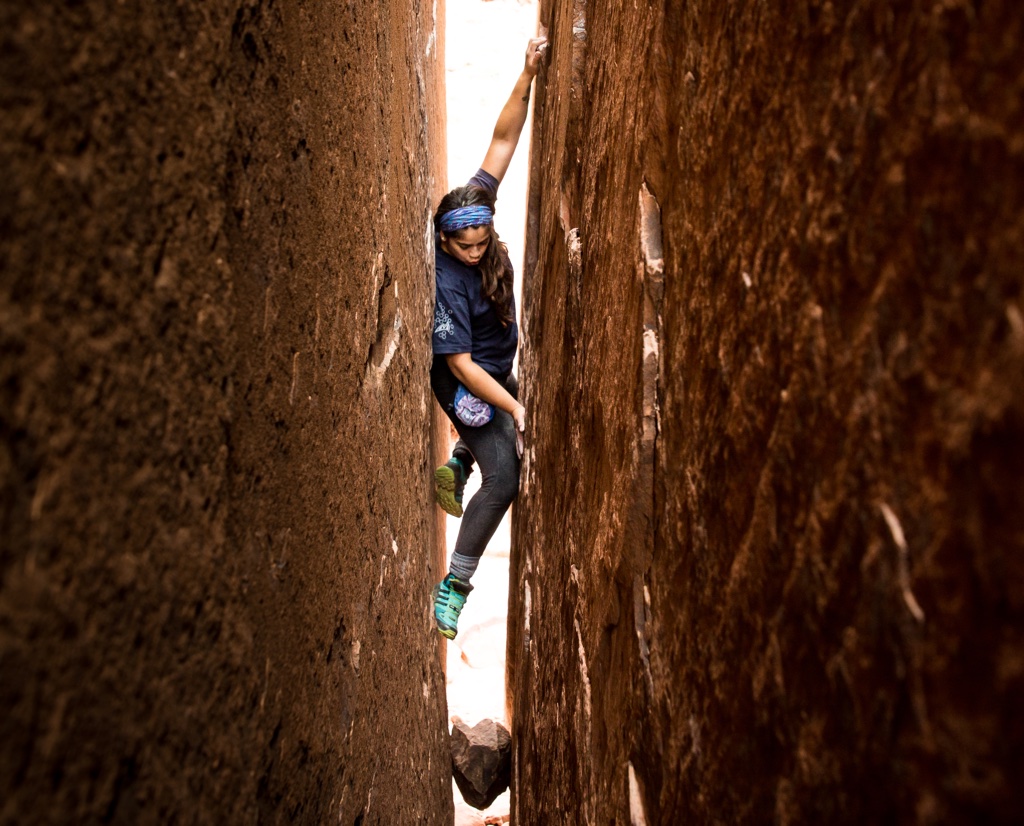
Initially, she began taking photos of her climbing days simply to remember them herself—and, possibly, to scare her dad on Facebook, she says. But when she won a lens that attached to her smartphone at a company holiday party, she began shooting more, and posting photos of herself and her friends. And she found other women who shared how she felt about climbing.
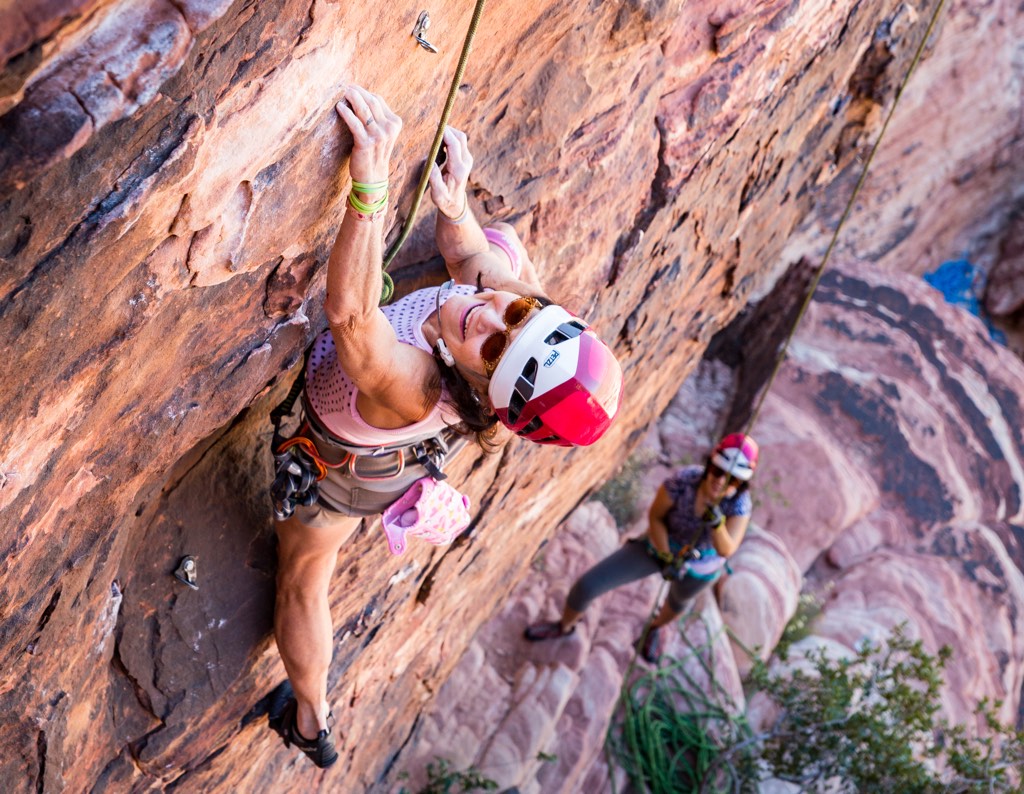
“In the beginning, you’re not making history,” she says, “but you’re super stoked about it. You’re so excited just going up one grade.” Her social media following grew, and she held on to that idea—that climbing is more about stoke level than specific grades. Her bold, brightly colored photos more often focus on the subject’s try-hard expression, or an articulation of joy, than on the route itself, and its difficulty.
Throughout this process, Yee has been forced to examine her own assumptions about what a climbing photographer’s life should look like. Instead of conforming to what she and others perceive climbing photography to be, she’s focused on being true to herself and what she wants out of life—and she’s excited to help other people challenge the status quo, too. Here are three myths Yee is dispelling for aspiring climbing photographers.
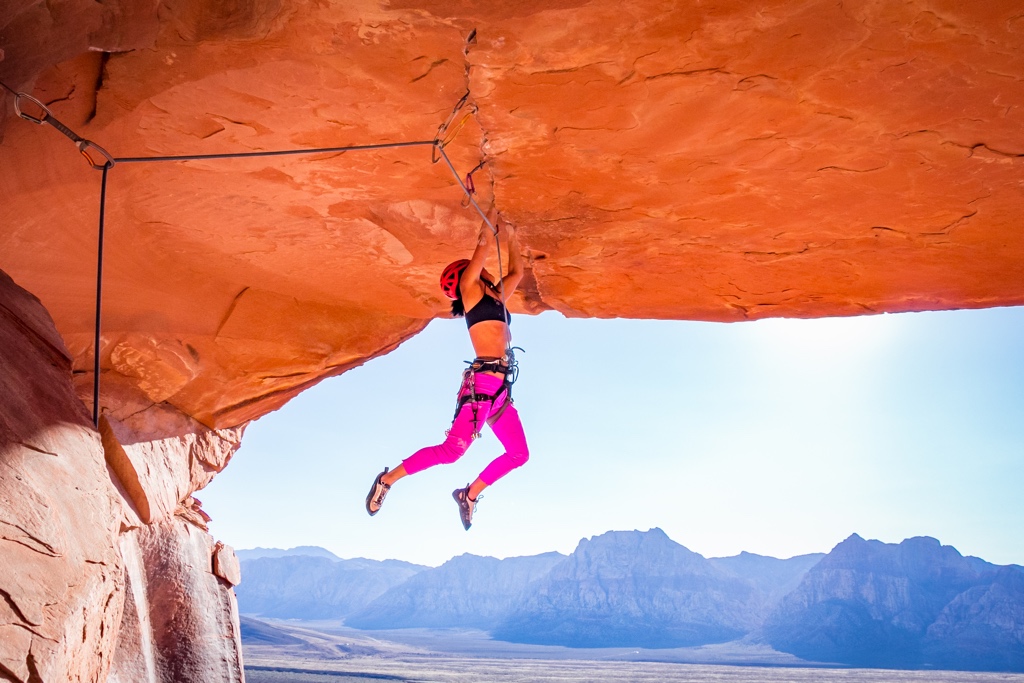
You don’t have to buy the most expensive photography gear
“You can buy nice gear, but you can’t buy creativity,” Yee says. “I think not having a lot makes you more creative.” For example, one of Yee’s more unique shots is a selfie she took while practicing jumaring—a way she could move up and down a rope to get a good angle for shooting photos. She taped a camera to her rope, set it on a time-lapse, and then ascended and descended the rope several times. She captured a photo of her face, perfectly framed by a carabiner. Many of her early shots were taken with a smartphone camera, with an attachable lens. “I challenge you to take a cellphone photo—it will make you more creative and stoked for a challenge. Every time I stepped up my equipment, I asked, will it make my photography better?”
You don’t have to give up everything else and live the van life
When Yee’s photography started taking off, she kept hearing from other climbers that she should move into a van and live on the road. “I felt so much pressure to want to want that,” she says. “I thought you had to live in a tent and eat nothing but saltine crackers to be hardcore, to give up everything else.” But she was happy with her home in Las Vegas. And she wanted to pursue interests in addition to climbing—like her contract work as a theater technician. “It took me a while to not feel bad about my dream of wanting my own bed and place to stay,” she says. “I’m all about challenging what people think is right. There’s nothing wrong with wanting a little stability in your life.”
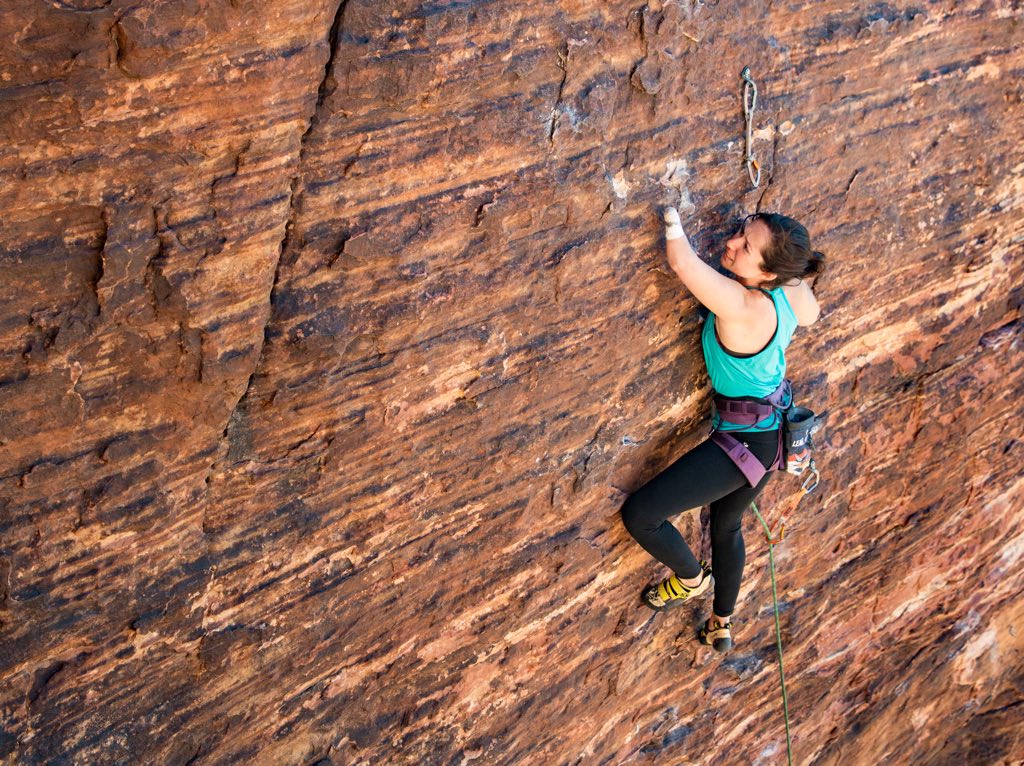
You don’t have to climb super-duper hard
Yee’s favorite moments for capturing a photo are when a woman’s strength comes through in her facial expression, she says—“any time a woman just looks baller.” And that doesn’t have to be putting up a first ascent or climbing the toughest grades. It doesn’t even have to be leading. “You have to photograph what you know,” she says. And for her, that means stoke. “I don’t care what grade you’re climbing, I care how excited you are doing it. … My tagline is, I don’t care about your skill level—I care about your passion level.”
